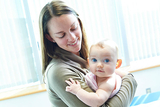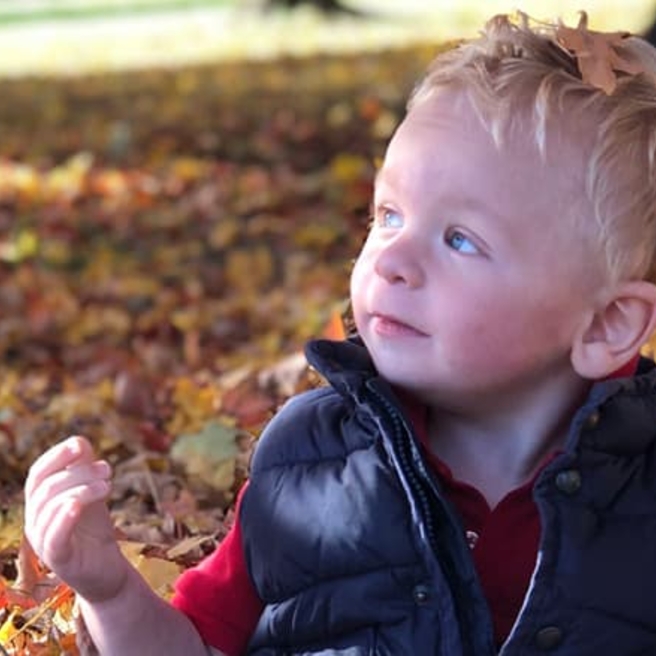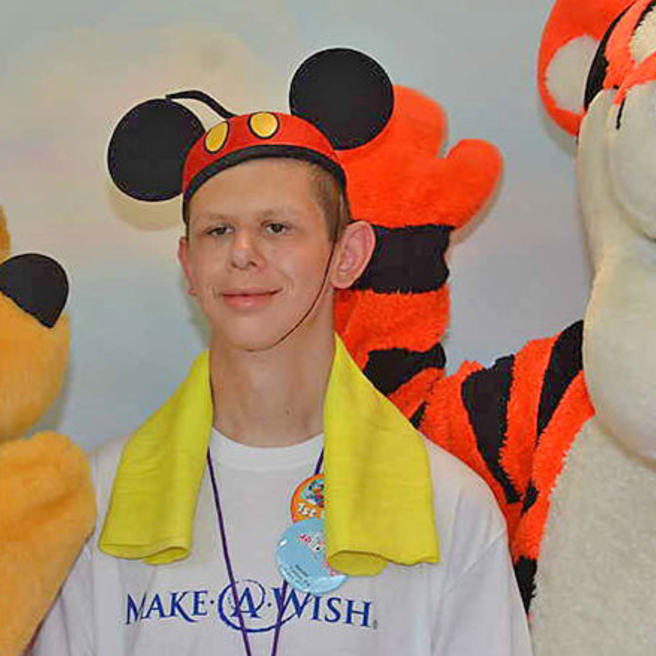What is hypertension?
Hypertension is the medical term for high blood pressure. When a person has hypertension or high blood pressure, the force of the blood pushing against the walls of arteries and vessels is too high.
Hypertension can be a sign of other medical problems, such as kidney disease or narrowed kidney arteries, or certain types of heart defects such as a narrowed aorta (coarctation). Hypertension puts extra strain on the heart and over time leads to thickening of the heart muscle. It can damage arteries, reducing oxygen and nutrients to important organs including the brain, the heart and the kidneys.
An estimated 3.5 percent of all children and teens, or more than 2.5 million children under 18 suffer from high blood pressure. There are probably many more children and adolescents with high blood pressure than we think. The rate of hypertension in children and teens has been increasing because of the obesity epidemic. There are also many children who have no outward signs of high blood pressure but have not been accurately tested.
Causes of high blood pressure in children
The younger the child, the more likely they are to have an identifiable cause for hypertension. In many cases, however, the precise cause of a child’s high blood pressure is not known. Children and adolescents are at higher risk of developing hypertension if they:
- Have a family history of high blood pressure
- Are overweight or obese
- Have Type 2 diabetes
- Have high cholesterol and triglycerides
- Were born prematurely or had very low birth weight
- Have issues with sleep, now called ‘sleep disordered breathing’ (SDB)
Poor diet (high sodium with low potassium) and lack of exercise also contribute to the development of hypertension in children.
Conditions that increase the risk of developing hypertension include:
- Chronic kidney disease
- Renal artery stenosis (a narrowing of the artery to the kidney)
- Heart defects, especially aortic coarctation (a narrowing of the aorta)
- Solid organ transplant (heart, kidney)
- Hormonal disorders (thyroid problems, adrenal problems, hormone-producing tumors)
- Genetic conditions (e.g. Neurofibromatosis) and other conditions with single-gene defects
- Inflammatory disorders (vasculitis, systemic lupus erythematosus)
Many medications can raise blood pressure; among them are oral contraceptives, stimulants, and corticosteroids, as can some over-the-counter nasal decongestants and cold medicines, herbal and nutritional supplements, dietary products, and recreational drugs.
Environmental exposure to lead, cadmium, mercury, or phthalates may raise blood pressure.
Signs and symptoms of hypertension
Children with high blood pressure usually do not have noticeable symptoms. However, an appreciable number develop headaches.
When hypertension remains undetected for long enough to cause health problems, or when hypertension accompanies other medical conditions, signs and symptoms may be noticed. Symptoms may include but are not limited to shortness of breath, flushing of the face, abdominal or leg pain and signs may include seizures, facial nerve weakness, crackles in the lungs, extra heart sounds, and protein in the urine.
Testing and diagnosis of hypertension in children
Because high blood pressure often has no noticeable symptoms and because it can cause serious health problems if undetected and left untreated, the American Academy of Pediatrics (AAP) recommends that children have their blood pressure measured every year as part of an annual well visit with a pediatrician starting at 3 years of age. Earlier blood pressure measurement is recommended for children who have risk factors for hypertension.
Blood pressure is measured with an inflatable cuff wrapped around the child’s upper right arm, which is connected to a pressure gauge. The cuff is inflated, then the air is slowly released. A sensor detects the pulse in the artery and matches it to the pressure in the band. The blood pressure readings are available immediately and are shared by the doctor during the visit.
The blood pressure reading is in the form of two numbers. The higher of the two is the measure of systolic pressure, the pressure in the arteries when the heart beats or pumps blood to the body. The lower of the two is the measure of diastolic pressure, the pressure in the arteries when the heart is at rest, between beats.
The normal blood pressure range varies with age, sex, and the child’s height (size), so what is considered high blood pressure in children varies with age and size, too. Doctors follow guidelines published by the AAP on normal blood pressure for kids to determine when a reading suggests high blood pressure.
Blood pressure readings for a particular child on a particular day can also vary. Exertion and anxiety can raise blood pressure temporarily. So if the family has hurried to the appointment or walked upstairs, or if the child is worried or scared during the visit, a slightly elevated reading may not be cause for concern. Machine readings can also have a margin of error, and inaccurate readings can be made if the cuff is not the right size for the child. Because of these factors, the AAP guidelines for pediatricians include additional testing steps.
Readings that are slightly above the threshold in the doctor’s office, when taken by the blood pressure machine, need to be rechecked manually at that visit and possibly over a period of days to weeks. When there is ongoing concern, the doctor may also want to verify the in-office readings by having the child wear an ambulatory monitor (ABPM) over a 24-hour period to track their blood pressure during a window of normal daily activity.
Because hypertension can be associated with other conditions, especially in infants and young children, the doctor may do additional tests to look for signs of kidney disease, a heart defect, hormonal disorders, diabetes, or elevated levels of cholesterol and triglycerides. These tests may include a comparison of blood pressure readings from arm and leg cuffs, heart or kidney imaging, and blood or urine tests.
The doctor will also ask about any family history of high blood pressure.
If the child is overweight or obese, that will factor into the doctor’s steps in making a diagnosis, and into the recommendations for treatment.
Treatment for hypertension in children
When high blood pressure is detected in overweight children and adolescents, the suggested first steps in treatment, in most cases, are changes to diet and physical activity. Removing salty and fatty foods from a child’s diet and increasing the amount of exercise is often all that’s needed to bring blood pressure down to healthy levels. Stress-reduction techniques, such as mindful breathing exercises, yoga, and meditation, may also help.
When the readings are very high, or the levels do not come down with these lifestyle changes, medication may be prescribed.
High blood pressure in infants and young children, and in older children whose high blood pressure is not resolved with lifestyle changes, maybe a sign of other medical conditions, such as kidney disease, a heart defect, or hormonal disorders. When any of these conditions are found, their treatment will be the first priority. Resolving the underlying condition is critical to the child’s health.
Medications used to treat high blood pressure in children and adolescents include:
- Angiotensin-converting enzyme (ACE) inhibitors help relax and widen blood vessels by blocking the formation of a chemical that narrows them.
- Angiotensin II receptor blockers (ARBs) help relax and widen blood vessels by blocking the absorption of a chemical that narrows them.
- Long-acting calcium channel blockers help relax the muscles in blood vessels.
- Cardio-selective Beta blockers slow the heart rate.
- Diuretics (also known as water pills) help the kidney eliminate sodium and water from the bloodstream, thereby reducing blood pressure.
If these medications do not work to reduce a child’s blood pressure, some additional medications include peripheral alpha-blockers, central alpha stimulators, and direct vasodilators. Sometimes, more than one medication is needed to treat high blood pressure.
Outlook for hypertension
Research shows that heart disease in adults often begins in childhood. Untreated, childhood hypertension can lead to a number of serious health problems in adulthood, including heart attack or heart failure at an early age, kidney disease or kidney failure, stroke, vision loss, and sexual dysfunction.
Early diagnosis of hypertension can lead to better long-term outcomes. Children are more resilient than adults. When high blood pressure is treated in young people, damage to the heart and arteries can often be reversed and damage to other organs is prevented.
Follow-up care for children with hypertension
When a child is diagnosed with hypertension, regular monitoring is needed to see that the treatment is working, whether that treatment involves lifestyle changes, medication, or intervention for another condition.
Once blood pressure has been brought down to a healthy level, lifestyle changes should be maintained. Medication may or may not need to be continued. The child’s doctor will advise on the frequency of follow-up visits and how blood pressure should be monitored between visits.
Why choose CHOP?
CHOP’s Hypertension Clinic, a cutting-edge collaboration between the Division of Nephrology and the Cardiac Center, specializes in evaluating and managing high blood pressure in children, adolescents, and young adults.
All of our team members have special expertise in managing hypertension and monitoring the effects of high blood pressure and treatment on the heart and blood vessels. We focus on the medical treatment of the condition and also work to prevent future cardiovascular problems, providing recommendations to help you and your child maintain a healthy lifestyle beyond management with medication. This attention to all aspects of your child’s health and well-being enables us to provide the very best care for your child while seeking to prevent future health challenges.
Reviewed by Shobha S. Natarajan, MD, and Kevin E. Meyers, MBBCh

Why Choose Us
Our specialists are leading the way in the diagnosis, treatment, and research of congenital and acquired heart conditions.
Resources to help
Division of Nephrology Resources
We have created resources to help you find answers to your questions and feel supported as you help your child cope with this condition.
Reviewed by Amy H. Schultz, MD, MSCE
Reviewed on 01/29/2025


